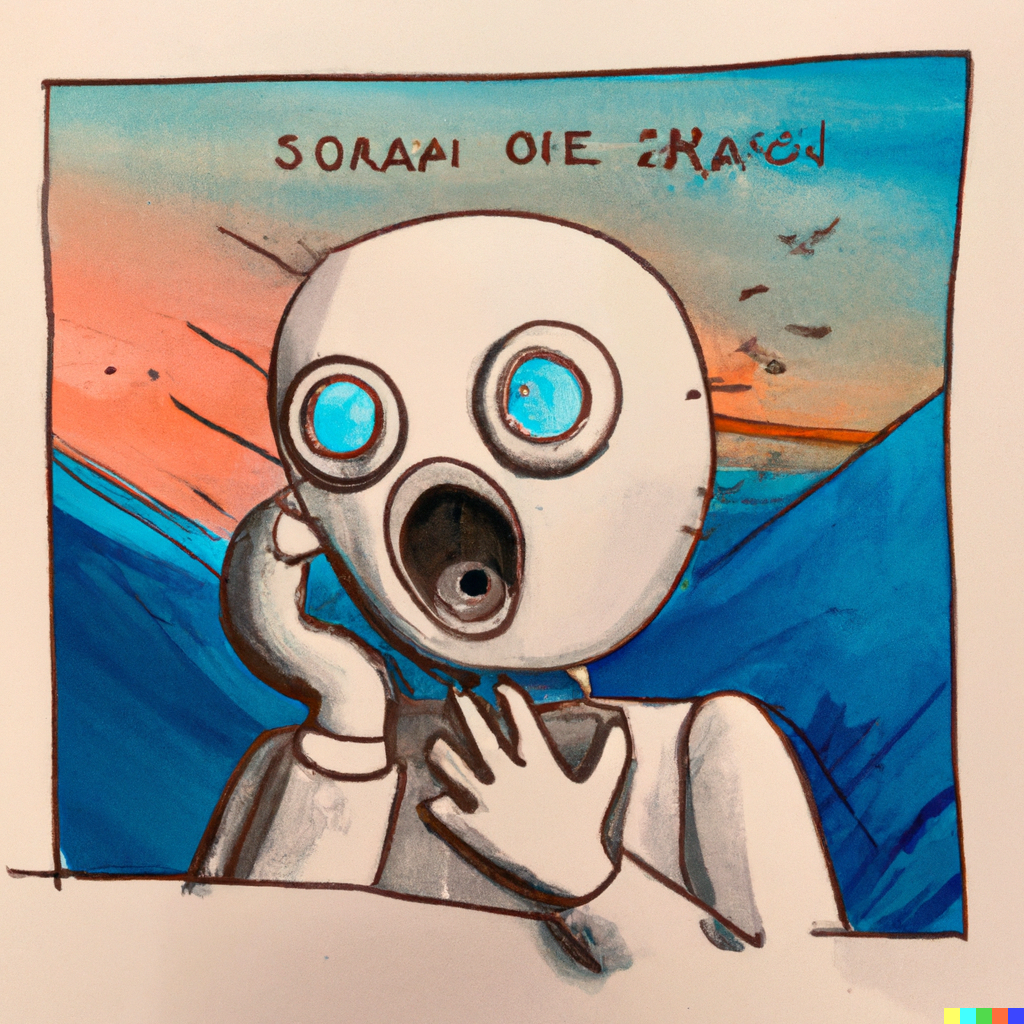This article is part of the new series “The power of inquiry”. You can find the first article here: The power of inquiry: how to ask better questions for improved outcomes. And stay tuned for the next pieces!
Technology is opening up new and endless opportunities every day. We live in a world where there are virtually no impossible futures. But as it’s pretty well known, “a tool is only as good as the hands that wield it”.

“Computers are useless. They can only give you answers”
— Picasso
Even the latest emergent technologies or AI products are no exception. Take the case of tools such as DALL-E 2 or Midjourney that allow you to generate images from a text prompt. In this case, the art is in crafting the prompt, and that depends completely on what the user asks of it.
In such a powerful future, with such endless potential at hand to change it all with technology, new questions are what will unlock new realities.

“Questions are places in your mind where answers fit. If you haven’t asked the question, the answer has nowhere to go”
—Clay Christensen
Only if we look at things differently, and ask different questions, we will discover the unthought. We are tasked with asking the right questions, to unlock the full potential that technology can harness.
But hey, it isn’t that simple, right? Many people, if not everyone, would agree that this is the hardest part of it all when pursuing innovation and creative quests.
“The important and difficult job is never to find the right answers, it is to find the right questions”
— Peter Drucker
And why is that? It starts with a simple fact: not all questions were made equal as Hal Gregersen – Executive director of MIT Leadership Center- points out in his book “Questions are the answer”.
Questions can be categorized as convergent and divergent questions. Let’s take a look at both:
Convergent questions: seek a single right answer. Closed questions like “What is the distance between San Franciso and Los Angeles?”.
Divergent questions, invite several answers like “How might we design the future of public transportation?” Open questions like this one propel creative thinking.
All types of questions have a place in our lives. But some create a fertile ground for ideas exploration and construction by sparking the imagination, while others can even be toxic for new ideas.
The good news? There are a few ways to build tools and habits to help us stop, pause, and check our questions before we jump into looking for answers. Here are some tools and frameworks that will come in handy.

The 5 Whys
The Five Whys is an iterative interrogative technique used to explore the cause-and-effect relationships underlying a particular problem. It is a great tool to help you look at an issue from a different perspective. The main goal of the 5 Whys is to dig up the root cause of a problem by repeating the question “Why?” five times.
This technique was developed by Sakichi Toyoda and applied in Toyota Motors. It was a critical component of problem-solving training they delivered as part of the induction to the Toyota Production System. Taiichi Ohno, father and architect of that method -which inspired LEAN production in the US- described it as “the basis of Toyota’s scientific approach: by repeating Why five times the nature of the problem, as well as its solution, becomes clear.”
First Principles Thinking
Assumptions become barriers to knowledge, and they tend to fixate the status quo. By definition, assumptions limit possibilities by limiting where we can take action.
‘First principles thinking’ is Elon Musk’s reasoning framework and comes from Physics. And it’s a great framework to bring down those assumptions and to broaden the possibilities.
“I do think there’s a good framework for thinking. It is physics. You know, the sort of first principles reasoning. (…) boil things down to their fundamental truths and reason up from there (…)” — Elon Musk (Chris Anderson Interview)
Basically, ‘First-principles thinking’ peels away all the assumptions, all of which has been treated as a given fact, but should not be, to uncover the fundamental undeniable truth. And then, builds on it.
It is the practice of intentionally questioning every assumption you think you ‘know’ about a problem. “What are you sure is true?” Those become your “axiomatic elements”, your base truths to work with.
“It is important to view knowledge as a sort of semantic tree. Make sure you understand the fundamental principles, i.e. the trunk and big branches, before you get into the leaves/details or there is nothing for them to hang on to.” — Elon Musk
How Might We…
When working in teams and looking to foster the search for new, unique, and innovative solutions, it’s fundamental to ensure that the way we frame the challenge is designed to do so.
How Might We questions, a.k.a “ HMW”, are a good way to frame a problem and design challenges, opening it to divergent thinking.
This type of question is also a great way to avoid individuals unconsciously suggesting solutions.
A few tips on how to leverage them to the fullest:
- Check if it is broad enough to foster many ideas. You want to ensure diverse ideas and perspectives.
- Ensure you are not including a solution in the question, keep it agnostic to ensure a broad pool of solutions. Ask yourself: are we suggesting a solution?
- Focus on the outcome you are trying to achieve. Ask yourself: Does the question link back to our desired outcome?
- Is it framed positively? Frame the questions positively to fuel creativity. Avoid verbs like ‘reduce’ and ‘avoid’. Can you reframe it with positive verbs like ‘create,’ ‘enhance,’ ‘promote’ and so on?
These are three simple tools to help frame and reframe a problem before jumping into searching for answers. They invite us to stop and look at the questions, and the assumptions behind them. Building the future and exploring its possibilities requires us to hone our questioning skills and sharpen our minds.
“One never notices what has been done; one can only see what remains to be done… “
—Marie Curie
Thank you for staying this long! This article is part of the new series “The power of inquiry”. If you enjoyed this one stay tuned for the next one.
